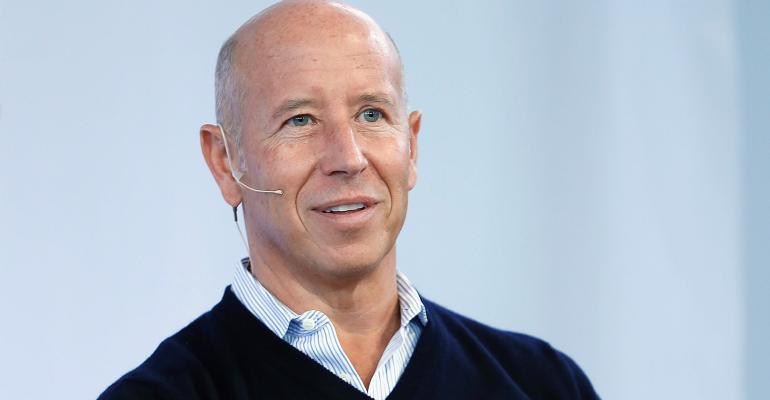(Bloomberg)—Starwood Capital Group owned 30 malls before the Covid-19 pandemic. It’s now down to eight.
As values for retail properties plunge, Barry Sternlicht’s investment firm has been selling shopping centers across the U.S. at money-losing prices. Its remaining malls are being managed by outside companies that potentially will seek new owners.
In essence, Starwood has decided it’s time to stop pouring good money after bad.
“With further deterioration caused by Covid, committing substantially more capital required to successfully reposition many of our assets became unviable at our existing cost basis,” Mark Deason, a Starwood managing director, said in an emailed statement.
The dispositions -- among the biggest U.S. commercial-property liquidations since the pandemic hammered the economy last year -- mark the end of a nearly decade-long bet that made Starwood the country’s fifth-largest mall landlord. Owners of gallerias and shopping centers across America are confronting a similar dilemma as they triage their ailing real estate, often finding themselves holding properties worth less than their debt.
By unloading its retail properties, which make up about 5% of its investments, Miami-based Starwood can shed more than $2 billion in debt obligations from commercial mortgage-backed securities.
Indoor shopping centers, already battered by competition from big box stores and e-commerce, plunged even further in value last year as lockdowns kept people away and major chains from Neiman Marcus Group to J.C. Penney Co. filed for bankruptcy. A price index of U.S. malls has dropped 18% from pre-Covid levels and 46% from a February 2017 peak, according to Green Street, a commercial real estate information service.
Mall landlords Washington Prime Group Inc., CBL & Associates Properties Inc. and Pennsylvania Real Estate Investment Trust have filed for bankruptcy. Even the financially strongest mall owners -- Simon Property Group Inc. and Brookfield Asset Management Inc. -- have walked away from shopping centers with dim prospects.
“The very best-quality malls will continue to survive and thrive,” said Kevin White, head of real estate research for DWS Group GmbH & Co., an asset manager with $100 billion in real estate globally. “But that’s probably 20% to 25% of the mall universe. All of the rest will have to be reconditioned into some other use.”
Most of Sternlicht’s malls were secondary properties in secondary markets, making them vulnerable to falling prices because such locations tend to have weaker sales or be in less-populated areas. The 85 top-rated U.S. malls account for half of the value of the 1,000-plus U.S. enclosed shopping centers, Green Street estimates.
Distressed Bets
Sternlicht, 60, founded Starwood in 1991 as a distressed real estate specialist. The firm, with about $80 billion assets, has aggressively switched strategies over the years in response to changing markets -- selling hotels, buying single-family rental homes, starting a property-finance unit, and acquiring LNR, a company that works out troubled commercial real estate.
Starwood began assembling a portfolio of malls and shopping centers in 2012 as the commercial real estate market recovered from the financial crisis. It paid $3.2 billion for 19 properties within 18 months, expanding to 30 malls by 2017.
Last year, the website described Starwood Retail Partners as “not your father’s – or grandfather’s – landlord. Now the fifth largest manager of regional malls in the United States, we acquire malls and lifestyle centers that dominate their markets, and invest our creativity and funds to reinvent the retail experience for a new generation.”
Even as it sells, Starwood still is willing to invest in retail property at the right price, Deason said.
“We continue to believe that there is a place for physical retail, but there will be a meaningful shift in which tenants survive and what rents they can pay, causing valuations and capital flows to be volatile for a period of time,” he said in the statement.
The company’s recent deals have included the May sale of the Blue Back Square shopping center in West Hartford, Connecticut, for $40.5 million, down more than 60% from its purchase price eight years ago.
Last month, it sold the Belmar in Lakewood, Colorado, for $113 million to Bridge33 Capital and Waterfall Asset Management. Starwood acquired the mall portion of the project -- an apartment complex was separated and is still owned by the company -- for about $200 million in 2015.
The lower acquisition cost will enable the new investors to make the property profitable, said Julio Siberio, head of acquisitions for Bridge33.
“There’s a supply-demand imbalance,” Siberio said. “We believe we are buying assets at the right basis due to those dynamics.”
Those opportunities may multiply. Regional mall loans account for almost three times more delinquencies than their share of CMBS, Moody’s Investors Service reported June 30.
CMBS debt is non-recourse, meaning a borrower can default without the risk of lenders coming after other assets. Last year, Starwood abandoned a portfolio of five malls with $549 million in CMBS debt, ceding control to owners of junior bonds sold in Israel. The properties were appraised in August at $557 million, down 55% in the two years since the debt originated.
One problem with Starwood’s CMBS debt was that its malls often were cross-collateralized, Sternlicht has said. That discouraged putting more money into properties with potential, because lower-quality malls drag down the value of the entire portfolio.
“If you had three good malls and one crappy mall, you had to save the crappy mall,” Sternlicht said during a webcast with real estate finance firm Walker & Dunlop Inc. last year. “It kept you from investing in the good malls, because you couldn’t fix the bad mall. And if you did, you’re just working for the debt, not for the equity.”
© 2021 Bloomberg L.P.





